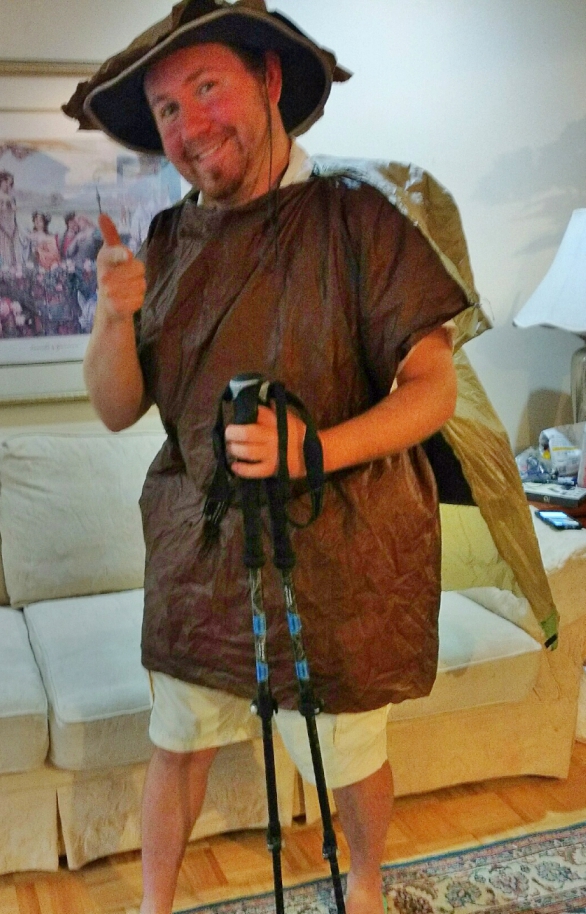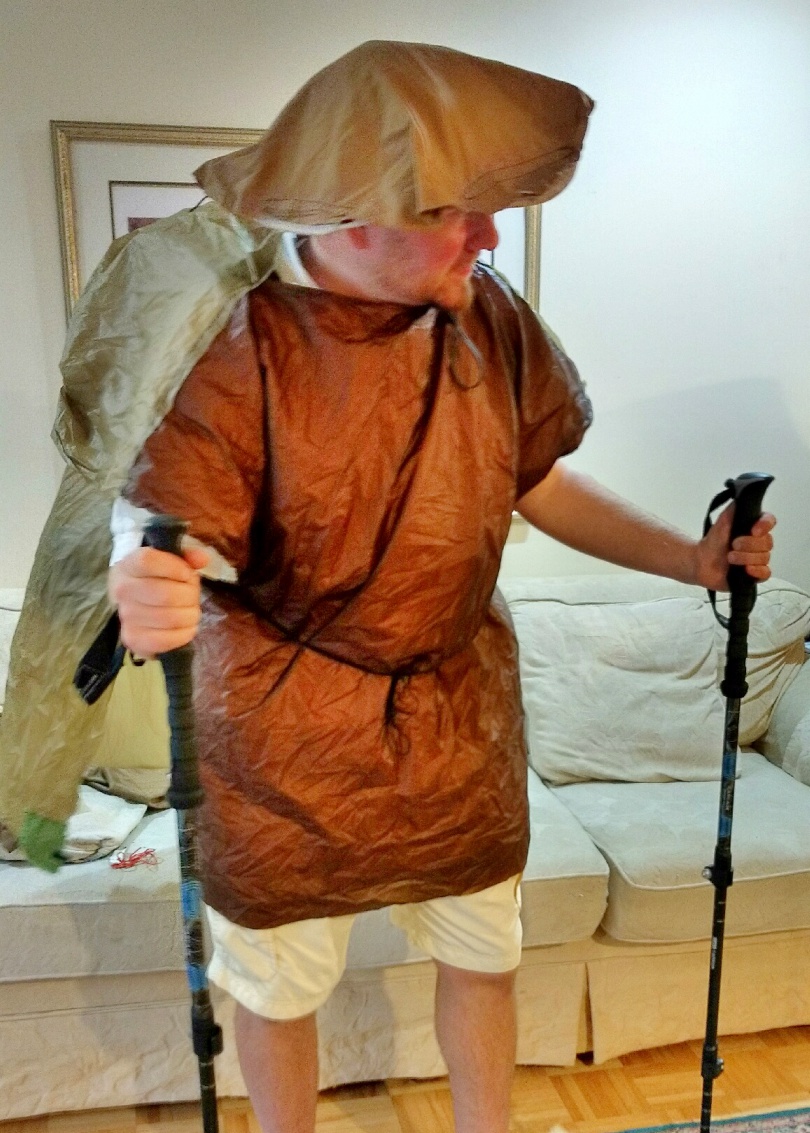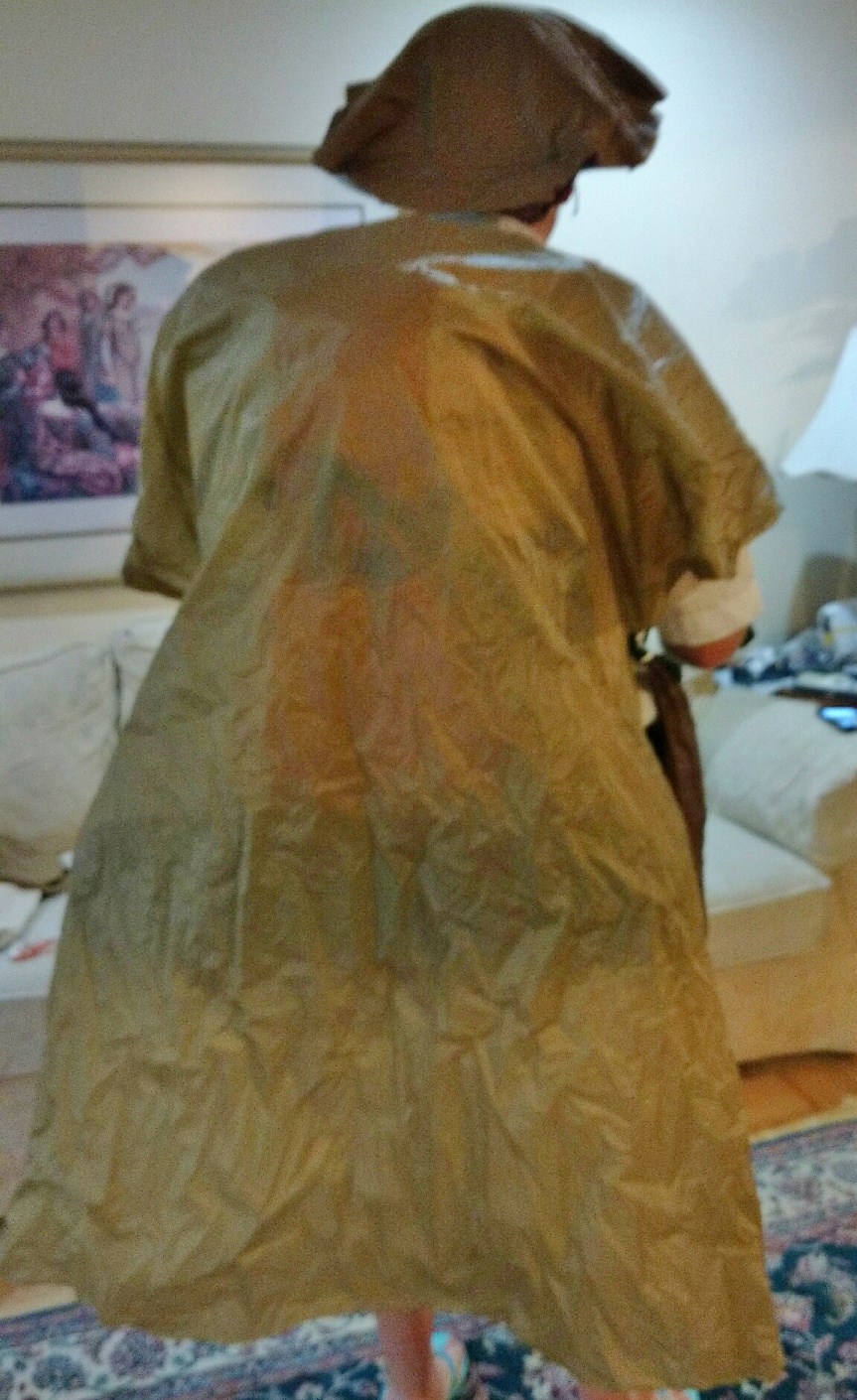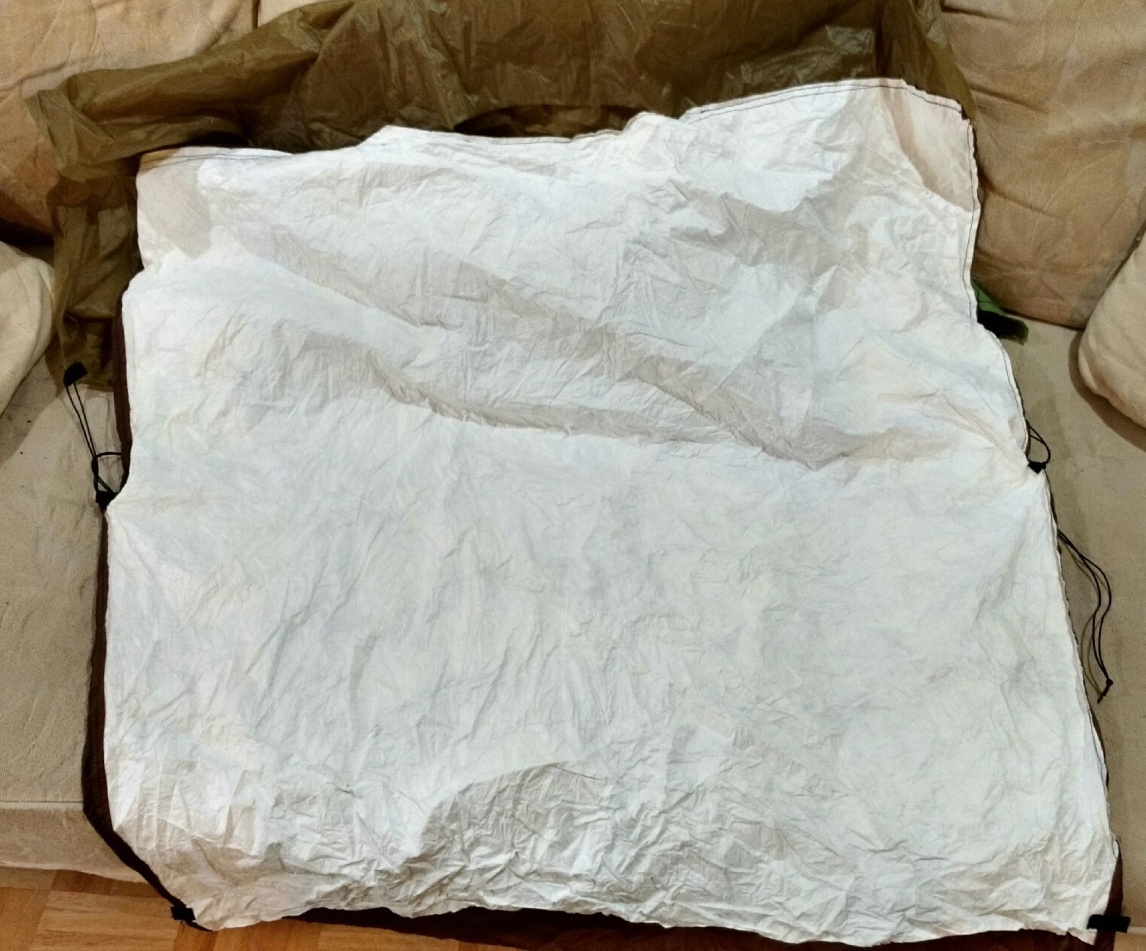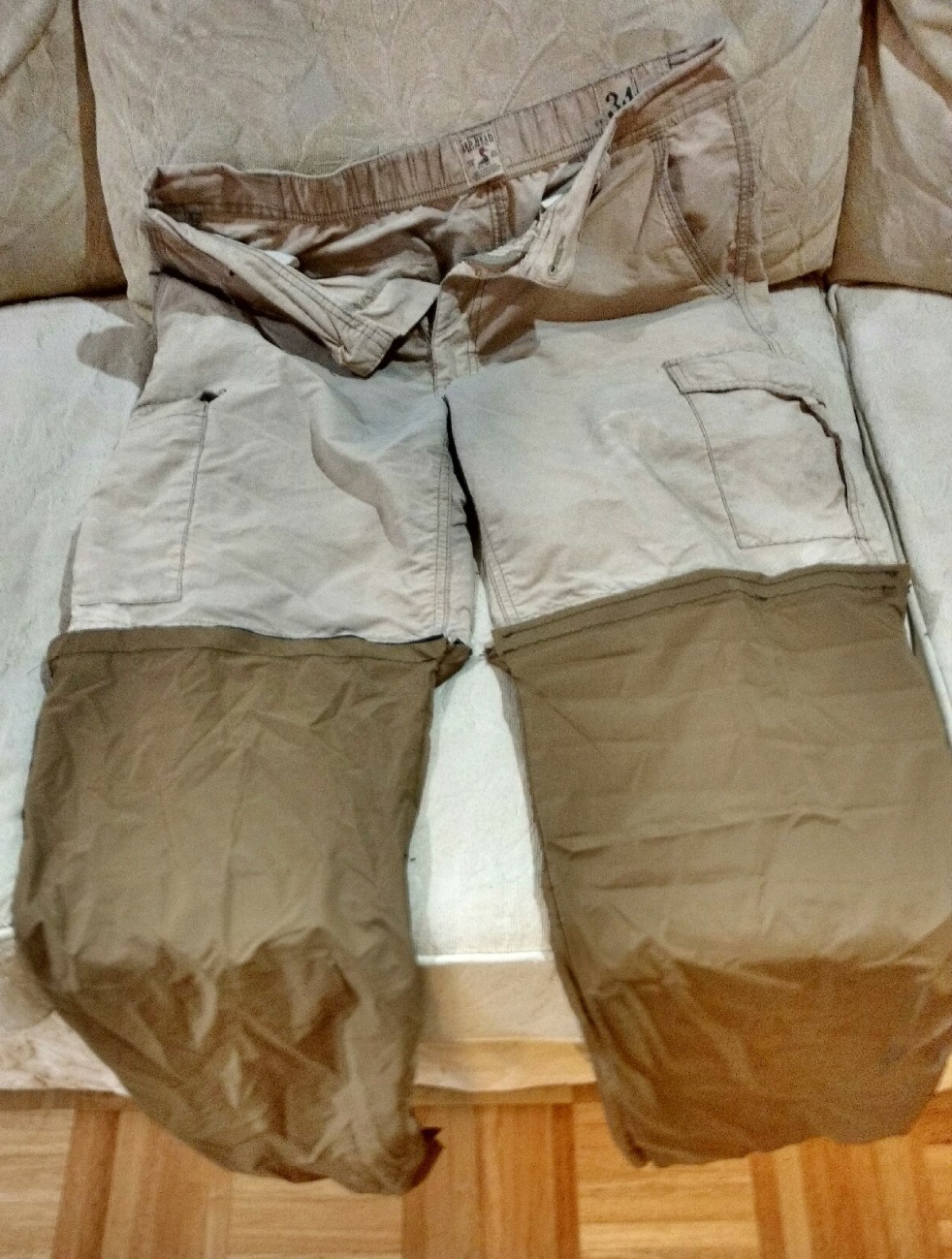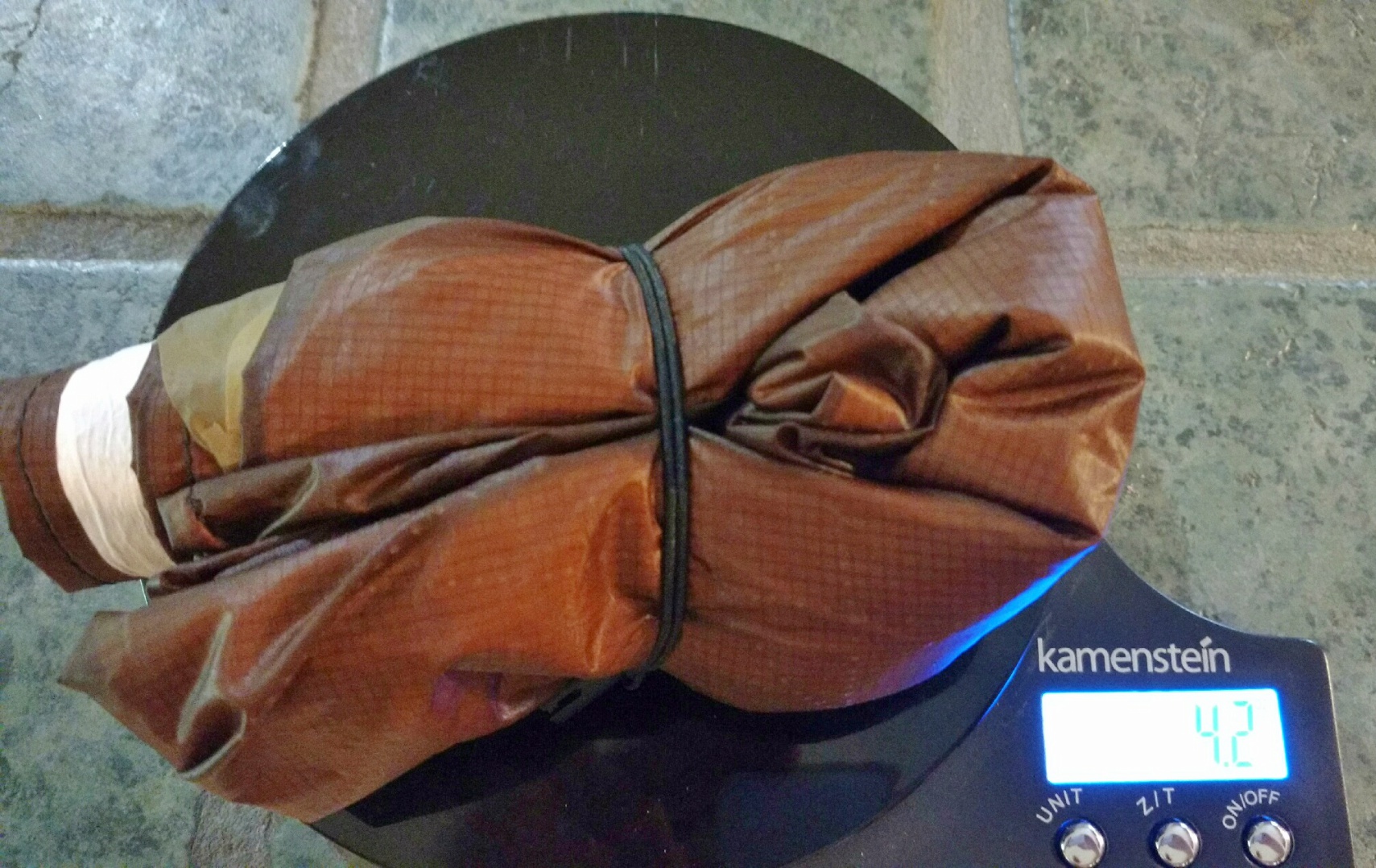Topic
Odd/unique, but very breathable rain gear system
Forum Posting
A Membership is required to post in the forums. Login or become a member to post in the member forums!
Home › Forums › Gear Forums › Make Your Own Gear › Odd/unique, but very breathable rain gear system
- This topic has 17 replies, 4 voices, and was last updated 1 year, 11 months ago by
 Bill Budney.
Bill Budney.
-
AuthorPosts
-
Aug 16, 2016 at 9:36 pm #3420698
Anonymous
InactiveWas tested on the CT, though we only had about 4 days of more serious rain (there were other days of light drizzle, but i don’t count that). Pics will be forthcoming.
First part is a simple poncho with no hood. The entire front of the poncho is WPB combo fabric. I sourced some of the old UL silnylon from Dutchware that didn’t test very well as to HH by R.N. (around an average of around 750mm if i’m remember correctly). To further increase air permeability, i folded it up, and ran it through my sewing machine while it was non threaded.
That’s the outer material, which won’t ever require adding more DWR (well, at least not for a very long time most likely). To that i sewed “Kite” or 1443R Tyvek that someone from BPL very kindly sent to me for free.
One batch of this type of Tyvek was tested by R.N. to have a CFM of around 6 and aged HH of around 1000 mm (a little under i believe). Since it’s made out of polyethylene, it’s naturally highly hydrophobic and won’t ever require a “DWR”, but will need to be occasionally rinsed and more rarely washed (same with the silnylon fabric). Apparently this sort of Tyvek (and others) are variable as to exact specs (which is unfortunate).
I did not sew the two fabrics together at the bottom. The idea was that any rain that got through the first layer of perforated UL silnylon, could escape through the bottom. I made the silnylon outer layer slightly longer so the weaker Tyvek inner would be less likely damaged. The silnylon outer in general protects the much less durable Tyvek from punctures, outer abrasion, UV damage, etc. It also dramatically lessens the force of the rain drops so that the Tyvek will be much less likely to be penetrated.
To this front WPB combo fabric, i sewed RSBTR’s Membrane Silpoly for the back, pack covering part. I also attached some 1/16th shock cord and micro cord locks, so i can cinch up the sides. When more cinched up, there is enough excess shock cord, that i can tie it across my front, which keeps the front stabilized and from flapping in higher winds. Total weight of poncho is 4.2 ounces.
Ok, so no hood, how do i protect my head? I took a wide brimmed nylon Sun hat, sewed some soft sided velcro onto it (4 strips–1 on each side, 1/front, 1/back). I took a piece of EPIC fabric and sewed matching velcro onto it. It’s a Sun hat when i need it, and a rain hat when i need it, and at very little weight gain. The other nice thing about it is that it allows me to vent my neck/chest better since there’s more coverage. It decrease wind drag too.
Actual experience/testing: Literally the most breathable and comfortable rain gear i’ve ever tried. The only cons are those that are common to ponchos–sometimes there was some water ingress through the side, arm hole areas, but a WR wind jacket is recommended for heavier rain to be used in combo anyways (can keep the front mostly unzipped to increase air permeability). Otherwise, kept me dry from both outside rain and internal moisture buildup and at 4.2 oz, hard to complain, though if you factor in the piece of EPIC that goes over the Sun hat, weight probably goes up to almost 5 oz.
Also, we experienced some hail on the trail, and the hat plus fabric on top, helped to cushion my head a little more than just a straight hood would have.
The beauty of the overall system is it’s combo of adaptability, lightweight, function, high breathability, and above all–no f’ing temporary “D”WR’s to mess with or compromise the breathability.
There is probably no rain gear system on the market, except umbrellas, that provide as much overall breathablity, while having serious rain protection. Didn’t cost much to make either, and was pretty easy/simple to construct. I probably will swap out the EPIC fabric for the hat, for the same combo WPB fabric i used for the front of the poncho. I could see my head eventually getting wet in a long, hard sustained rain, though the EPIC fabric is pretty highly WR and the nylon hat underneath is innately somewhat hydrophobic.
I’m looking forward to more testing/use in the more humid S.E. where i live, because i feel that is where it will shine even more.
Aug 16, 2016 at 9:50 pm #3420700Anonymous
InactiveProbably should add the rest of the rain gear system. Since the poncho was long enough to cover 98% of my shorts, a rain skirt would have been redundant.
Instead, i sewed some of the soft part of velcro to the bottom hem of the shorts, and made corresponding “pant sleeves” (out of the same highly WR EPIC fabric) with matching velcro at top, so i could just attach these as needed. Also added very little weight, maybe a couple of ounces total.
This allows my crotch area to still breath pretty well even when converted into “rain gear”.
Many people have said something to the effect that this whole rain/internal moisture battle cannot be beat and that seeking high breathability is a fool’s errand.
Pfft, it’s not only been beaten, it’s been stomped into the ground. At an estimated total cost of about 30 dollars, and less than 3 hrs of work (though, some definite deep thought and time on planning and design previous).
Aug 16, 2016 at 11:46 pm #3420722GIve us some pics :)
Aug 17, 2016 at 6:54 am #3420746Anonymous
InactiveProbably later today after work.
Aug 17, 2016 at 5:22 pm #3420884Anonymous
InactiveThe shorts i’m wearing in this pic are longer than the ones i took on the trip


“What, am i not turtle looking enough for you?!”

This is the inside view of the front of the poncho
 Aug 17, 2016 at 5:29 pm #3420886
Aug 17, 2016 at 5:29 pm #3420886Anonymous
InactiveHat & Bottoms:



 Aug 17, 2016 at 7:02 pm #3420907
Aug 17, 2016 at 7:02 pm #3420907Anonymous
InactiveAlmost forget the scale pic
 Aug 18, 2016 at 8:37 am #3420965
Aug 18, 2016 at 8:37 am #3420965Anonymous
InactiveCorrection (can’t edit the 1st post): R.N. tested Dutchware’s Argon silnylon to an average 702.99 mm H20 HH virgin. I wonder if that means that there was localized, measurable air permeability in some areas (that’s what i was hoping, but didn’t want to completely rely on, which is why i perforated it as well)?
An interesting question i’ve long wondered about, is how the HH get’s affected when there is more than one layer of WR material being used? Testing a single layer is pretty straight forward, but i think two layers probably complicates things.
If Paramo’s claims are to be believed, then two layers of WR fabrics can dramatically increase HH in a non linear way (meaning above simply adding fabric A’s HH+ fabric B’s HH). Logically it makes sense, because if you have an outer layer that dampens most of the initial force/pressure of the rain, then the layer below only needs to be sufficiently WR to repel the now more static water (though not completely so, pressure from fabric moving, etc still happens).
If lighter and more UL EPIC fabrics ever start to get manufactured more, and with greater CFM levels, then it would seem that combining two layers of such light and more air permeable fabrics would be a great combo along the lines of the the above WPB fabric combo in my poncho, but importantly, more reliable and uniform specs for DIY’ers. Since the 1443R Tyvek is fairly protected (except inside abrasion)–i expect it to last a fairly long time, but two layers of silicone impregnated, woven polyester or nylon fabrics would be significantly more durable.
Aug 18, 2016 at 10:15 pm #3421122Wow that’s impressive. Thanks for posting. How much do think that all cost?
Aug 18, 2016 at 10:40 pm #3421125From his post above
At an estimated total cost of about 30 dollars, and less than 3 hrs of work (though, some definite deep thought and time on planning and design previous).
Oct 5, 2016 at 4:29 pm #3429535Interesting concept!
If you have any more field experience please post an update.
Oct 15, 2016 at 5:00 am #3431251Nice, Justin. I am intrigued at the long term possibility.
My first thought about the two-layer front was “two layers will reduce the breathability so why not just use a single, more “waterproof” layer? But at your minimal weight, I like the two layer idea.
Keep playing with your ideas. I’ve enjoyed them over the years.
Oct 16, 2016 at 9:15 am #3431412I, too, would be interested in an update.
- How has the tyvek inner held up?
- Do you find that the head slit is protected enough in downpours or would a collar help?
- Did you use the Argon 67 or 90?
Mar 17, 2023 at 9:38 pm #3776165Continuing discussion from Begging for State of the Market Rain Jacket Report
I was wondering when you were going to give us an update on this cool concept.
I especially like your hat idea. That seems better than any special-purpose rain hat I have seen. Allows you to pack and wear a truly breathable hat the rest of the time. Like a poncho for your hat!
Some thoughts:
Maybe only shoulders, tops of arms, and head need any HH at all? The vertical parts should suffice with your permanent-DWR fabric, because the angle (and force) of impact is extremely small. Limiting the waterproof sections should allow the rest to be much more breathable.
As you say, the pack cover could be any waterproof fabric.
Or maybe it doesn’t have to be a poncho at all? The main problems with a jacket are where the pack presses fabric against the wearer’s body. Make the back fully breathable (monolite?). Perhaps torso zips (like OR Foray) could be placed so that shoulder straps go UNDER the fabric?
The bottoms of the arms could be water resistant or straight breathable. They don’t get much rain other than drips.
A simple water-resistant panel could optionally be attached to the back when not wearing the pack. Snaps or velcro; like your hat.
The result could be a jacket that is waterproof where necessary, water-resistant where helpful, and fully breathable where pressed by the pack.
The main advantage of a jacket is ease of removing the pack without removing the jacket. On the other hand, a jacket is probably much harder to construct than a poncho. Simplicity is part of the beauty of your concept.
Do you have sources for the materials you need? Especially that outer, woven, permanently-DWR fabric… that seems like magic. Does it exist?
Mar 19, 2023 at 4:54 pm #3776309Hi again Bill,
I’m having the stitches out of my middle finger tomorrow (hopefully), so I will get back to your post after that. I’m finding typing with not being able to use a finger is slowing me down considerably compared to my norm.
But to answer your last question, they sort of exist, or did more so in the past. EPIC fabrics more or less fit the bill. If you can ever find tightly woven, lighter polypropylene fabrics by the yard, let me know. I’ve searched many times to no avail. (Yet some years back, bought a UL woven PP windjacket from a high end British shop. Didn’t work for my purpose since it was made to be highly wicking).
Mar 20, 2023 at 11:33 am #3776389The result could be a jacket that is waterproof where necessary, water-resistant where helpful, and fully breathable where [needed]
That basic concept was actually in a few waterproof-breathable “hybrid” jackets years back (around a decade or so ago?). Have the shoulders, arms, etc.. in waterproof-breathable fabric, but then have water-resistant fabric for the more protected, sweaty areas .. namely under the arms/extending down each side panel. Sounds good in theory but in practice hikers were complaining about getting drenched in a deluge.
Hardcore hikers may growl and say “hike harder” to force warm sweat to rise to push back cold rain coming through said side panels, but the big box stores have to worry about returns (probably “little box” stores too).
I’d think if any sport may successfully integrate something like a hybrid rain jacket, it would be “high octane” mountain bikers or maybe trail runners?
Mar 20, 2023 at 1:53 pm #3776394I am pretty sure there are some trail running jackets made like this. In the 2000s ArcTeryx made the Alpha Comp. GoreTex yoke and outer arms, Schoeller Dynamic? body. A lovely piece. It was great for a lot of activities, but was not great for backpacking in an extended rain because it would wet though and then saturate. Not a problem when moving, but a real issue when I stopped for the night.
That said, if it’s cold a light DWR shell combined with something like a fleece that provides warmth and absorbs little water can work if you manage your activity levels but you won’t be “dry”, you will be warm enough and not soaked. I have done that for several seasons, and still do it on done in a day activities. When out for multiple nights I prefer to stay dry by lowering activity level while wearing real rain protection. With shakedry I typically haven’t had to drop activity level much to stay dry.
Mar 20, 2023 at 2:43 pm #3776399Yes, a zoned garment would be for light rain and warmer weather (which is most of the rain I see). Like a good wind shell, it would not entirely replace real rain gear.
Is that the same Schoeller fabric as a BD Alpine Start? It would be a good choice for the wind parts. Maybe not as perfect as Justin’s hypothetical PP DWR, but at least we know that Schoeller exists.
I like the idea of ShakeDry/Outdry/Frogg Toggs UL. Will be interesting to see how/if the technology evolves. I see that more in the “heavy rain gear” role than the “light rain” role that Justin’s concept fits.
-
AuthorPosts
- You must be logged in to reply to this topic.
Forum Posting
A Membership is required to post in the forums. Login or become a member to post in the member forums!
Trail Days Online! 2025 is this week:
Thursday, February 27 through Saturday, March 1 - Registration is Free.
Our Community Posts are Moderated
Backpacking Light community posts are moderated and here to foster helpful and positive discussions about lightweight backpacking. Please be mindful of our values and boundaries and review our Community Guidelines prior to posting.
Get the Newsletter
Gear Research & Discovery Tools
- Browse our curated Gear Shop
- See the latest Gear Deals and Sales
- Our Recommendations
- Search for Gear on Sale with the Gear Finder
- Used Gear Swap
- Member Gear Reviews and BPL Gear Review Articles
- Browse by Gear Type or Brand.

